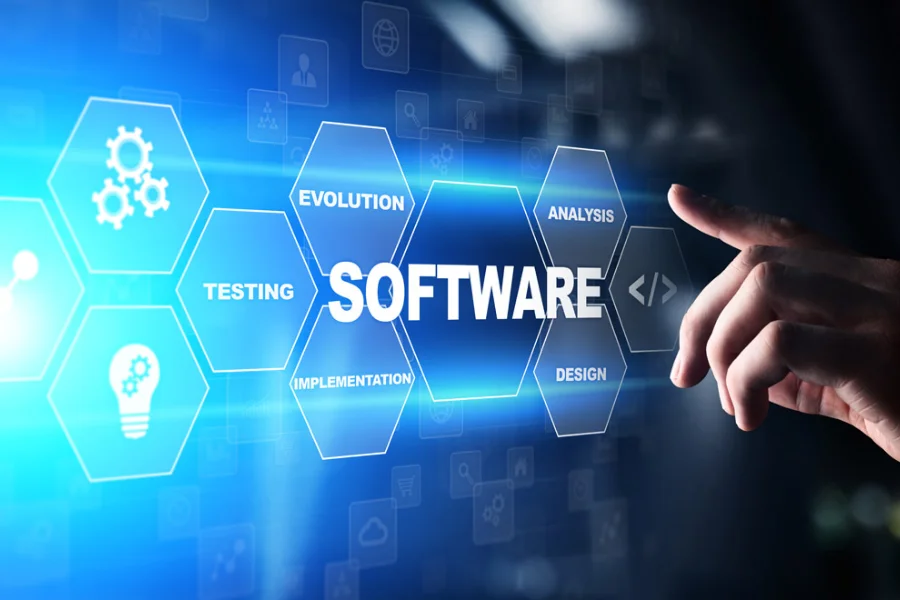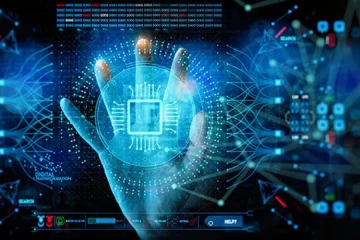Breaking Down the Top Software Trends of 2023: What You Need to Know

Software Trends | Mykaba
2023 has been a year of rapid technological advancements, and the software industry is no exception. With the pandemic driving the need for remote work and digital solutions, software companies have been forced to innovate and adapt. As a result, we’ve seen a surge in the use of new technologies and trends that are shaping the way we work and live. From artificial intelligence to low-code platforms, the software landscape is evolving at an unprecedented pace. As a digital marketer and content writer, it’s crucial to stay up-to-date with the latest software trends to ensure that your clients remain competitive and relevant. In this article, we’ll be breaking down the top software trends of 2023 and what you need to know to keep your clients ahead of the game. Whether you’re a seasoned professional or a newcomer to the industry, this guide will provide you with valuable insights into the trends that are shaping the future of software development.
Artificial Intelligence and Machine Learning
Artificial intelligence and machine learning are not new concepts, but they are becoming increasingly relevant in the software industry. With the rise of big data and cloud computing, AI and machine learning are being used to automate and optimize processes, improve decision-making, and enhance customer experiences. In 2023, we are seeing more and more software companies incorporating AI and machine learning into their products and services.
One of the most exciting applications of AI and machine learning is in natural language processing. With the development of sophisticated algorithms, computers can now understand and analyze human language, allowing for more accurate and efficient communication between humans and machines. This has significant implications for industries such as customer service, where chatbots and virtual assistants can provide immediate and personalized responses to customer inquiries.
Another area where AI and machine learning are making a big impact is in the field of predictive analytics. By analyzing large amounts of data, software companies can predict future outcomes with a high degree of accuracy. This has applications in industries such as finance, where predictive analytics can be used to forecast market trends and make investment decisions.
Cloud Computing and Hybrid Cloud Solutions
Cloud computing has been around for several years now, but it continues to be a dominant trend in the software industry. With the pandemic driving the need for remote work and digital solutions, cloud computing has become an essential tool for many businesses. In 2023, we are seeing more and more software companies offering cloud-based solutions, as well as hybrid cloud solutions that combine public and private clouds.
One of the biggest benefits of cloud computing is scalability. With cloud-based solutions, businesses can easily scale their infrastructure up or down depending on their needs. This is especially important for businesses that experience fluctuations in demand throughout the year.
Another benefit of cloud computing is cost savings. By using cloud-based solutions, businesses can avoid the upfront costs of purchasing and maintaining hardware and software. Instead, they pay for what they use on a subscription basis, which can be much more cost-effective in the long run.
Internet of Things (IoT) and Edge Computing
The Internet of Things (IoT) refers to the network of physical devices, vehicles, home appliances, and other items that are embedded with sensors, software, and connectivity. In 2023, we are seeing an increasing number of software companies developing IoT solutions that allow businesses to collect and analyze data from these devices.
One of the biggest challenges with IoT is the sheer volume of data that is generated. To address this challenge, software companies are turning to edge computing, which involves processing data closer to the source rather than sending it to a centralized location. This allows for faster processing and analysis of data, as well as reduced bandwidth usage.
IoT and edge computing have applications in a wide range of industries, from manufacturing and logistics to healthcare and agriculture. By collecting and analyzing data from IoT devices, businesses can optimize processes, reduce costs, and improve customer experiences.
Low-Code Software Development
Low-code software development is a trend that is gaining traction in 2023. With low-code platforms, developers can create applications with minimal coding, using drag-and-drop interfaces and pre-built modules. This allows for faster development times and lower costs, as well as increased collaboration between developers and business users.
One of the biggest benefits of low-code platforms is their ease of use. With traditional software development, it can take months or even years to develop and deploy a new application. With low-code platforms, developers can create and deploy applications in a matter of weeks or even days.
Another benefit of low-code platforms is their flexibility. With pre-built modules and templates, developers can quickly create custom applications that meet the specific needs of their clients. This can be especially valuable for small- and medium-sized businesses that may not have the resources to develop custom applications from scratch.
Cybersecurity and Data Privacy
With the increasing amount of data being collected and analyzed by software companies, cybersecurity and data privacy have become major concerns in 2023. Software companies are under increasing pressure to ensure that their products and services are secure and protect the privacy of their users.
One of the biggest challenges in cybersecurity is the increasing sophistication of cyber attacks. Hackers are using more advanced techniques to penetrate networks, steal data, and disrupt operations. To address this challenge, software companies are developing more advanced security solutions, such as artificial intelligence-powered threat detection and response.
Another challenge in cybersecurity is the increasing number of regulations and compliance requirements. In 2023, we are seeing more and more countries and regions implementing data privacy laws, such as the General Data Protection Regulation (GDPR) in the European Union. Software companies must ensure that their products and services are compliant with these regulations, or risk facing fines and legal action.
Virtual and Augmented Reality
Virtual and augmented reality are not new technologies, but they are becoming increasingly relevant in the software industry. With the pandemic driving the need for remote work and digital solutions, virtual and augmented reality are being used to enhance communication and collaboration between remote workers.
One of the most exciting applications of virtual and augmented reality is in the field of training and education. With virtual and augmented reality, learners can engage in immersive and interactive experiences that simulate real-world scenarios. This can be especially valuable for industries such as healthcare and manufacturing, where hands-on training is essential.
Another application of virtual and augmented reality is in the field of marketing and advertising. By creating immersive and interactive experiences, businesses can engage customers in a more meaningful way and increase brand awareness.
Blockchain Technology
Blockchain technology has been around for several years now, but it continues to gain traction in the software industry. With blockchain, transactions are recorded on a decentralized ledger, making them more secure and transparent. In 2023, we are seeing more and more software companies incorporating blockchain into their products and services.
One of the biggest benefits of blockchain is its security. With transactions recorded on a decentralized ledger, it is much more difficult for hackers to penetrate the network and steal data. This makes blockchain ideal for industries such as finance and healthcare, where data security is essential.
Another benefit of blockchain is its transparency. With transactions recorded on a public ledger, it is much easier to track and verify transactions. This can be especially valuable for industries such as supply chain management, where transparency and traceability are essential.
Automation and Robotics
Automation and robotics are not new concepts, but they are becoming increasingly relevant in the software industry. With the rise of artificial intelligence and machine learning, automation and robotics are being used to automate and optimize processes, reduce costs, and improve efficiency.
One of the most exciting applications of automation and robotics is in the field of manufacturing. With automation and robotics, businesses can automate repetitive and mundane tasks, allowing workers to focus on more complex and creative tasks. This can lead to increased productivity and efficiency, as well as reduced costs.
Another application of automation and robotics is in the field of healthcare. With robotics, doctors and nurses can perform surgeries and other procedures with greater precision and accuracy. This can lead to better patient outcomes and reduced recovery times.
The Future of Software Trends
The software industry is evolving at an unprecedented pace, and the trends we’ve discussed in this article are just the tip of the iceberg. In the coming years, we can expect to see even more advanced technologies and trends emerge, such as quantum computing, 5G networks, and decentralized finance.
As a digital marketer and content writer, it’s crucial to stay up-to-date with the latest software trends to ensure that your clients remain competitive and relevant. By staying informed and adapting to new technologies and trends, you can help your clients achieve their business goals and stay ahead of the game.
Conclusion
2023 has been a year of rapid technological advancements, and the software industry is no exception. From artificial intelligence to low-code platforms, the software landscape is evolving at an unprecedented pace. By staying up-to-date with the latest software trends, you can ensure that your clients remain competitive and relevant in the ever-changing digital landscape. We hope this guide has provided you with valuable insights into the trends that are shaping the future of software development.









